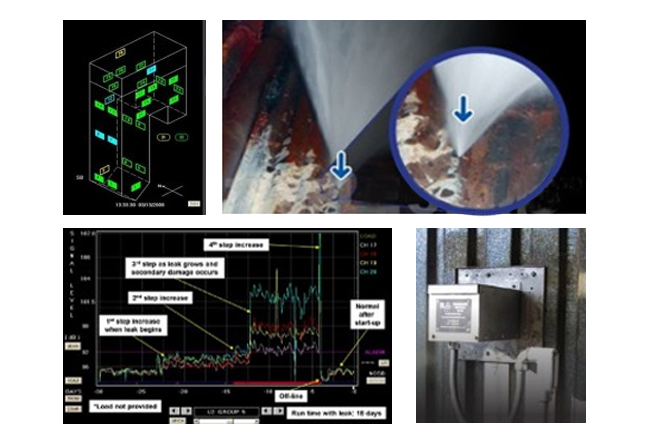
Product Description
The MISTRAS | TRIPLE 5 Acoustic Monitoring System is used for early tube leak detection on pressurized vessels such as pulverized coal or gas fired power boilers, recovery boilers and feedwater heaters.
The Triple 5 AMS™ for early tube leak detection has been used in conventional power boilers very successfully over the past 25 years. Non- invasive sensors, mounted on the boiler wall, are listening for a change in the normal background noise of the boiler that indicates a steam leak. The AMS™ provides 24-7 real time data that tracks the progression of a tube leak.
Early knowledge of tube leaks provides a plant with information to make operational, safety, financial and technical decisions based on real time trending.
Traditional methods for tube leak detection, audible leak noises, boiler water make up, opacity, water chemistry changes or water dripping prior to or after shutdown, may not provide early warning of a leak. In addition, plant operators are not able to locate the area of the leak with traditional leak detection methods. MISTRAS | Tripe 5 AMS™ indicates a leak sooner than traditional methods and helps plant operators to locate the leak based on sensor location and signal amplitude.
The AMS™ uses 3/8” diameter sounding rods (also known as waveguides) and high.
temperature sensors to listen for leaks. The sounding rods attach perpendicularly to the cold side of the boiler wall of a power boiler. The rods do not penetrate the membrane, instead fillet weld to the cold side of the boiler wall, and then pass through the insulation and lagging to the outside of the unit. The boiler wall acts as a diaphragm, vibrating synchronously with low and high frequency sounds that transmit through the combustion gasses and boiler wall. The sensor converts the vibration to an electrical voltage for processing by an amplifier filter box. The resulting trend utilizes the air and metal-borne frequencies generated by a leak to show the greatest difference from the normal background noise of the boiler. The AMS™ further processes and trends the data for the operators using specialized hardware, proprietary software and an industrial data logger.
Benefits:
— Early indication of a tube leak, before traditional plant methods
— Reduce secondary damage
— Manage power market exposure and risk
— Locate area of leak(s) before unit comes offline
— Trend severity and progression of leak with real-time data
— Schedule maintenance vs forced outage
— Preplan jobs with correct assets
— Scalable installation options
— Reduce maintenance costs
The AMS detects:
— Boiler Leaks
Water wall
Reheat
Superheat
Economizer
Penthouse
Dead Air Spaces
Headers
— Feedwater Heater leaks and Defects
—Sootblower effectiveness
—Stuck Sootblowers
—Leaking Poppet Valves
—Slag/Pluggage
—Damaging Backpass Vibration
—Aspirating and cooling air leaks
—SCR horn operation

